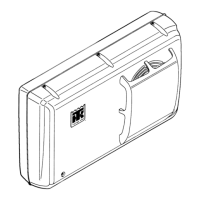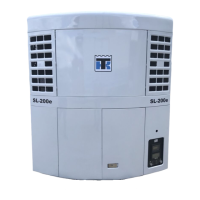Compressor and Clutch Maintenance (Rev 1/99)
88
Clutch Test
1. If the field coil lead wire is broken, replace the field
coil.
2. Check the amperage and voltage. The amperage range
should be 3.6 to 4.2 amps at 12 volts or 1.8 to 2.1 amps
at 24 volts. Note the following symptoms and
conditions.
a. A very high amperage reading—a short within the
field coil.
b. No amperage reading—an open circuit in the
winding.
c. An intermittent or poor system ground results in
lower voltage at the clutch. Check for tight fit of
the coil retaining snap ring or coil retaining screws
for good ground.
d. Replace field coil if it has an open or short circuit.
3. Air Gap—An incorrect air gap could cause erratic
engagement or disengagement and/or clutch rattle.
Check the air gap with a feeler gauge (0.01 to 0.02 in.
[0.3 to 0.6 mm]). Adjust per the Clutch Installation
chapter.
BELT TENSIONS
Engine/Compressor Belt and Pulleys
Correct pulley alignment and proper belt tension are very
important factors in compressor installation. The compres-
sor clutch must be perfectly aligned with the engine pulley
and any auxiliary idler or belt adjustment pulley compo-
nents. When installing the clutch, be sure the shaft drive
key is in place and the shaft bolt is properly tightened.
Check the pulley alignment by holding a 24 to 35 in. (60 to
90 cm) long rod, 0.5 in. (13 mm) in diameter firmly into the
V-groove of the clutch pulley and make sure the rod aligns
squarely with the engine drive pulley groove. Double check
by making sure the belt goes from pulley to pulley in perfect
alignment with no indication of a sideward bend.
Adjust the belt tension to 58 to 60 on TK Gauge P/N 204-
427. Check the belt tension again after 36 to 48 hours of
initial operation of the unit because the belt may stretch
slightly during the first hours of use. Remember, good
alignment and proper belt tension ensure long belt life.

